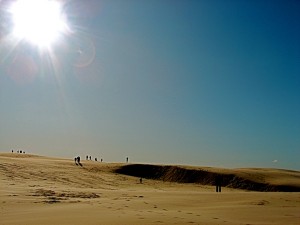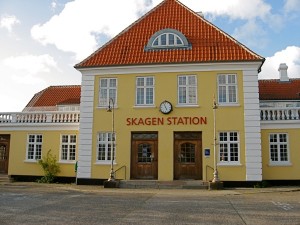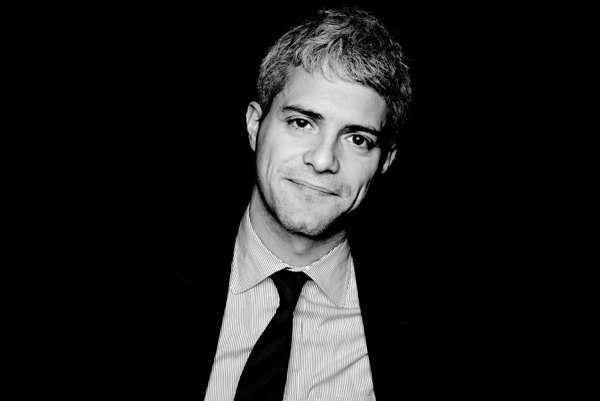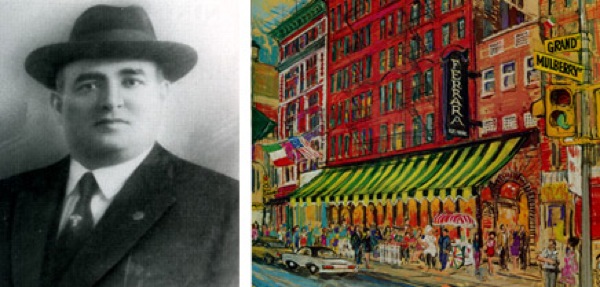By Benita Hussain
“This country is mild, smiling, fantastic, mighty, wild, wonderful and awe-inspiring. It is Skagen–There is no other place on the face of this earth like it.”
Norwegian painter Christian Krohg may have used one too many superlatives when describing the northernmost city of Denmark’s Jylland peninsula; however, anyone who visits Skagen will understand how a more lyrical description would be shocked out of him by the land’s striking beauty. There is, indeed, no other place on the face of this earth like it.
The exquisite landscape of Skagen was so alluring that Krohg and his artist and writer friends flocked to what was once a sparsely–populated fishing village in the late-1800s–drawn by the way the Northern Lights and sun reflected off the coast and greenery, and the Blue Hour, when the line between sea and sky would disappear at dusk. The rapid desertification of Northern Jylland, still apparent at nearby Rabjerg Mile (the largest moving dunes in Northern Europe), also added to Skagen’s dichotomous nature.
Influenced by the en plein air style of the French Impressionists, the original eight Skagen Painters, also followed the Barbizon School’s nature / realist movement, included artist Jean-Francois Millet. The eponymous artists’ colony’s hope was to capture the outdoor splendor of Skagen’s coastline as well as the tip of Grenen, the beach where the North Sea and Baltic Sea crash against each other, just to Skagen’s north. Their depictions of the sea and its revelers and fishermen, as well as their portraits of the indoors, emphasized a mix of the Scandinavian light and shadows in Impressionistic ways, years before the movement even occurred.

Image by Benita Hussain
While the Skagen Painters helped make the city famous, the “bohemian” reputation they built drew many other artists that also became entranced with its luminosity and stark nature as well as the low-profile yellow houses with red-tiled roofs, for which Skagen became known. With artists came, as is often the case, tourists, and Skagen now remains a vacation spot that attracts mainly high-end travelers from Copenhagen, but one that has still managed to keep its charm despite the influx (likely because nature has already done the work).
Art Museum:
In 1908, during one of their regular meetings at Brøndum’s Hotel, which was owned by the family of one the painters, Anna Ancher, the colony launched their own museum. After the death of colony member P.S. Kroyer, his home at Skagen Plantation became the museum. In 1919, the Brøndum Hotel’s old garden was donated to colony, where the museum was completed in 1928. In 1997, the museum was moved to its final building at the Technical School, where 1800 works of art are now on display.
Skagen’s Museum, Brøndumsvej 4, DK-9990 Skagen, +45 98 44 64 44
Brøndum’s Hotel, Ancerhsvej 3, DK-9990 Skagen, +45 98 44 15 55
Other Museums:
Less famous than the museum devoted to the Skagen Painters is the one devoted to teddybears. Yes. Teddybears. This writer never had the chance to view this private collection of owner Jonna Thygesen, but recommends it nonetheless.
Skagen Bamsemuseum, Oddevej-2/A, 9990-DK Skagen, +45 98 44 21 08
And for Scandinavian or viking history buffs, visit the Museum of Local History, which offers an open-air experience and exhibit displaying houses and crafts from Skagen in the past 200 years.
Skagen’s Museum of Local History, P.K. Nielsensvej 8-10, 9990-DK Skagen
Cultural landmarks:
The St. Laurence Church, originally named after seafarers’ and Skagen’s patron saint, and now known as the Sanded Church, was the largest church in the region at the time of its building in the 14th century. The increased desertification of the Northern Jylland did not spare the church and caused the town to close it in 1795. When the Danish writer and poet visited Skagen in 1860, he found the tower (the only visible portion) so inspiring, he wrote “A Story from the Dunes:”
“The drifting sands have covered the enormous arches. The dunes and wild roses cover the church, where the rambler now walks up to its steeple, which points up out of the sand, a colossal gravestone, visible for miles; no king ever had one more magnificent! Nobody disturbs the rest of this corpse. Nobody knows it or knew it before now – the storm sang it to me between the dunes!”
The Sanded Church, Skagen Klitplantage, , 9990-DK Skagen, +45 98 44 43 71
The seafarers of Jylland needed lighthouses, and while the Vippefyret, or tipping lantern, of Skagen, built in 1627, was inventive, it wasn’t that effective. A restored version of the lighthouse is now just a cool sight and a style that can only be found in a few places in Dentmark.
Skagen Vippefyret, Gl. Fyrvej 1, 9990-DK Skagen, [phone not available]
Music Festivals:

By Benita Hussain
Each July, folk musicians from around the world join traditional Scandinavian artists for the Skagen Festival, a multi-day event held at four venues, including an outdoor campsite for the biggest names. This year’s festival even included U.S. artist Arlo Guthrie. Many of the concerts are free of charge, but check the website for more information.
Skagen Festival [see website for more information]
Access:
Skagen is 41km north of Frederikshavn and about 50km northeast of the port town of Hirtshals. Trains in Denmark are both efficient and comprehensive. To reach Skagen by train, travelers must first get to Frederikshavn, which has 35-minute trains that run about once an hour. Travelers can reach Frederikshavn from the major Jylland cities of Aarlborg (1.5 hours) or Aarhus (3 hours), or from Copenhagen (7 hours).
Additionally, the summer time Skagerakkeren bus connects Skagen to other parts of Northern Jylland.
 MUSEYON BOOKS Smart City Guides for Travel, History, Art and Film Lovers
MUSEYON BOOKS Smart City Guides for Travel, History, Art and Film Lovers

